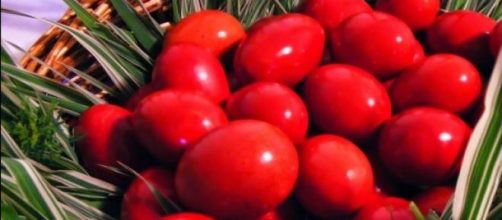A lot of people in the world will celebrate Easter this Sunday, April 12. The greater part of the population in Belarus, Ukraine, Russia, Bulgaria and Greece and some other countries are Orthodox. There are Orthodox communities all around the globe - and all of them will celebrate Easter (or Pasch, Pascha) on April 12 this year.
Why do we have two Easters?
That's a complicated story. The thing is that churches base Easter dates on different calendars: Western churches use the modern civil Gregorian calendar, and Orthodox churches use the older, Julian calendar introduced by Julius Caesar.
Calculating the dates using a simple rule of "the Sunday following the full Moon which falls on or after the equinox" seems to be easy. But it's not, because there are different approaches to defining the full moon and the equinox: the ecclesiastical full moon is not an astronomical one, and the astronomical equinox has no fixed date while the ecclesiastical one is fixed on March 21 (but in Julian calendar it currently corresponds to 3 April in the Gregorian calendar).
The traditions of the Orthodox Easter: red eggs and kulichi
That is not only the date that differs the Orthodox Easter from the Western holiday. In Belarus (and it is the same tradition in Russia) we don't have Easter bunnies and chocolate.
In fact, even the eggs are traditionally dyed only in one color - rich red, though in the recent years more people dye eggs in different colors or put bright stickers on them just for fun.
Why red? This is the color of life and victory, and commemorates the blood of Jesus. Usually people use skins of yellow onions to get that natural color. Dyed eggs can also be polished with some vegetable oil.
In Belarus, we have a traditional Easter game called "bitki". The rules are simple: each player selects a red egg and finds an opponent. One person has to say, "Chistos Voskrese" (Christ has risen).The other replies, "Voistinu Voskrese" (Indeed He has risen). Then the first one taps the end of his/her egg against the end of the opponent's egg to crack it (but you may crack yours though!).
When one end is cracked, the winner uses tries to crack the other end of the opponent's egg. A person who succeeds in cracking other players' eggs is believed to have good luck during the year.
There is also a traditional dish which has the same name - Pascha. It is made of farmer's cheese and has a form of a truncated pyramid decorated with a three-bar cross, and the Cyrillic letters X and B (stands for Христосъ Воскресe - "Christ has risen!").
But the most delicious part for me are always kilich - the Easter bread which is traditionally baked in tall round tins and decorated with white glaze. My mother adds raisins into pastry, some add candied fruit or nuts.
All that makes a holiday even more pleasant and meaningful for those who follow the Lent and fast for 40 calendar days before Easter.
The last 7 days of these 40 - a Holy Week - are a complete fast with no meat, fish, poultry or dairy products. And during this week many Orthodox Christians visit the church daily, and spend the night before Easter there.

